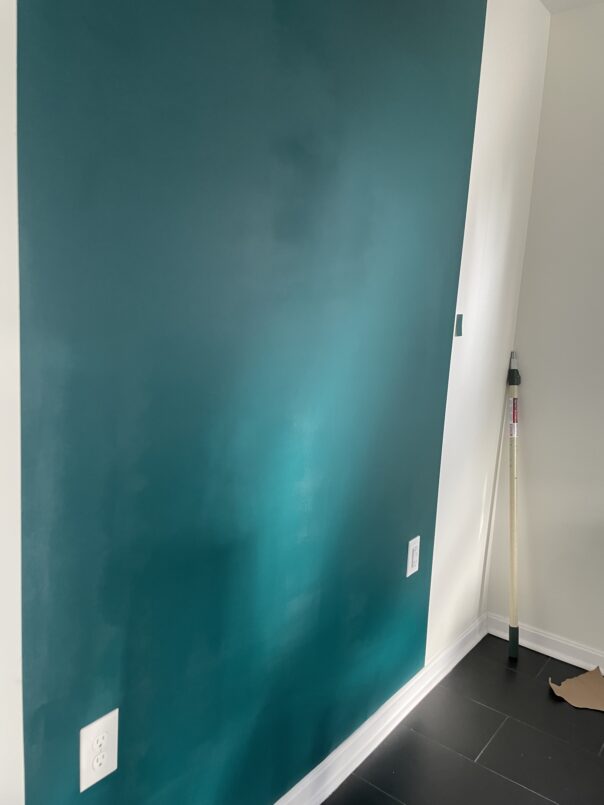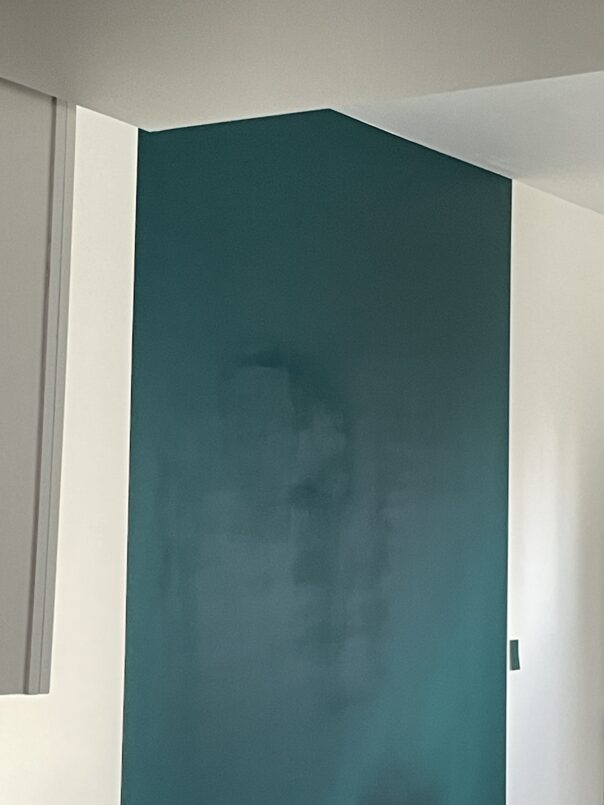That moment when you have luck with your initial try of a DIY project with paint and you assume it’ll work for another…WRONG! I learned this the hard way. Hard meaning, a ton of paint purchased because I realized 3 quart sized cans later that primer should always be used when painting a wall. Primer looks a lot like paint, but according to my research primer has a higher concentration of solids plus an adhesive binder in it. It essentially seals the surface and provides a smooth and clean area for paint to adhere. In some ways, it’s more of a glue or sealant than a paint.I know using primer may seem like a no-brainer, but hear me out: I was painting brand new drywall, why would I possibly need primer?! And I had previously painted a wall without primer that turned out perfectly. Well, apparently this doesn’t matter even with new walls, especially with the interaction between different elements in the room. For example, the wall mentioned in this post is in the kitchen, so you can imagine that elements that interact throughout time.
Thanks to the good folks at Sherwin Williams for getting me together. I took a picture of my wall with the inconsistent sheen and irregularities and their first question was, “did you use primer?” Here’s a link to the primer I purchased. The great thing about that particular primer is that I didn’t need to sand down the wall. Just simply put two coats of primer up and repaint the way
Below are some photos of the wall painted without primer.
The reason even brand new drywall needs to be primed is because the surface is porous. The surface is porous when it absorbs water, moisture, oil, odors or stains. Both the paper that covers it and drywall mud are compromised by water or moisture when they are not sealed first with primer. Without primer, paint soaks into the porous surface, weakening it and requiring more coats to get the desired color.
Primer is cheaper than paint, so by priming first, you’re actually saving money and time (take it from me, this wall took much longer than it should have) from the additional coats of paint you’d need to do to get the same effect.
Happy priming BEFORE painting!













